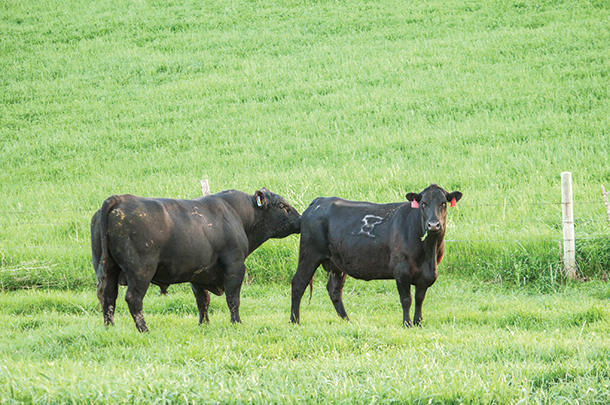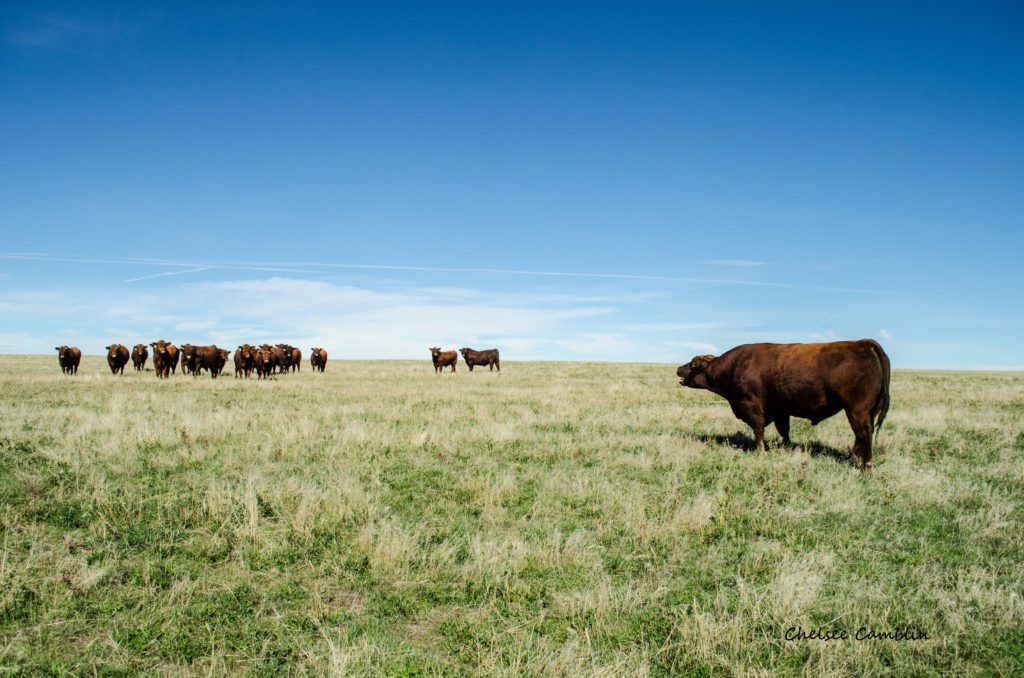The 2021 calving season has most likely wrapped up for many of you and, more than likely, you have already started planning or may already be into your 2021 breeding season.
This is also the time of year many producers are in the process of buying semen and synching cows for a variety of artificial insemination (A.I.) programs. A.I. has become a valuable tool for improving the genetics of our herds, but there are still some things that must be considered prior to implementing an A.I. program. In this column, I will discuss the importance of A.I., the importance of matching A.I. resources to your cow herd and production resources, and ultimately matching your cleanup bull’s genetic potential to your A.I. program.
1. Why is A.I. an important tool for my operation?
A.I. is a valuable process that allows producers to have access to genetics they may not have ever had the opportunity to integrate into their herds. This opportunity allows producers to improve or address performance issues that may be present in their herds. Due to the advances made over many decades, producers now have access to bulls that may be thousands of miles away and may have been well out of their price range to purchase at a bull sale. Specifically, this process affords producers the ability to incorporate levels of performance or phenotypes that will drastically improve their genetic base and allow them to develop replacements with higher genetic value from other populations. Lastly, due to synchronization programs, we can breed large groups of females at one time and subsequently calve at a similar time. This shortening of the calving window also allows us to differentiate between A.I. calves and calves produce via live cover cleanup bulls.
2. Why is it essential that producers select cleanup bulls that genetically complement my A.I. program?
Even with a highly successfully A.I. program, it is more than likely a producer is going to need cleanup bulls to breed cows that didn’t conceive with the A.I. program. For example, let’s say a producer has a 200-cow herd and 60% bred to the A.I. That leaves 80 cows that must be exposed to a bull so conception rates are acceptable for the breeding season. As a producer, if you invest heavily in A.I. genetics, why would you not want to ensure that the other 40% of your calf crop is experiencing genetic improvement as well? Another concept we talk repeatedly about in the industry is the importance of uniformity in calf crops. If we are going to make a significant investment in our A.I. calves, wouldn’t we want the calves from our cleanup bulls to have similar performance and phenotype so they don’t stand out as being inferior to the A.I. calves? This uniformity, or lack thereof, can affect our marketing strategy and replacement selection strategies. Specifically, if we are keeping replacement females from these matings, wouldn’t we want heifers from both A.I. and cleanup to have the potential to integrate into our herds, become efficient cows and have good longevity and subsequently good profitability?
3. How do I identify cleanup bulls that complement my A.I. program?
The identification of complementary cleanup bulls to an A.I. has become reality, thanks to all the advances in genetic selection technologies and the fact that many seedstock producers utilize A.I. and embryo transfer technologies. First and foremost, our genetic prediction tools (EPDs, genomically enhanced EPDs, commercial genomic tests, etc.) have improved substantially over the last decade and provide us enough valuable information to select bulls that have the genetic potential for the traits important to us, in order to complement bulls we are utilizing in our A.I. programs. Second, the vast majority of seedstock producers who are selling bulls have implemented reproductive technologies such as A.I. and embryo transfer into their production systems. Third, due to advances in internet and online sales, we now have access to production sales we normally would not be able to attend, and most likely are selling bulls that meet our requirements and allow us to purchase bulls complementary to our A.I. program. Finally, by doing some research on these bulls and critically evaluating their phenotype and genetic potential, you are capable of not only incorporating improved genetics from an outside source, genetics produced via A.I., but genetics in a live bull that are capable of complementing your A.I. breeding strategies.
4. Remember that ‘superior’ may not mean complementary to our production system
Although the use of reproductive technologies has increased and genomic technologies have improved, it is still essential for producers to identify genetics that are both superior and complementary to their production systems. The one pitfall a producer doesn’t want to fall into is incorporating genetics into their system that are not complementary to their production resources. In this situation, animals that are not complementary tend to drive up production costs in order to remain in the system, don’t typically have longevity in the system and are typically culled, meaning that they are no longer genetic contributors to the herd. Furthermore, because they were not complementary, they did not provide any genetic improvement to the base herd. It is important to remember that just because a phenotype is unique, or if the animal has the highest performance or extreme genetic potential, it may not be beneficial to your operation. This is true for both A.I. and natural service sires.
Summary
In conclusion, due to advances in breeding and selection technologies, A.I. and complementary cleanup bull selection has the potential to improve beef herds. However, it is still essential that producers critically evaluate the type of genetics compatible with their production resources and goals, and try to complement their A.I. program genetics with cleanup bull genetics that are compatible to produce optimal and productive calves from both matings.
SOURCE; Matthew Garcia, Beef Cattle Specialist, Utah State University, Progressive Cattle
PHOTO: Cleanup bulls that are complementary to your A.I. program will help maintain uniformity in calves, improving your marketing and replacement selection. Progressive Cattle Staff photo.









